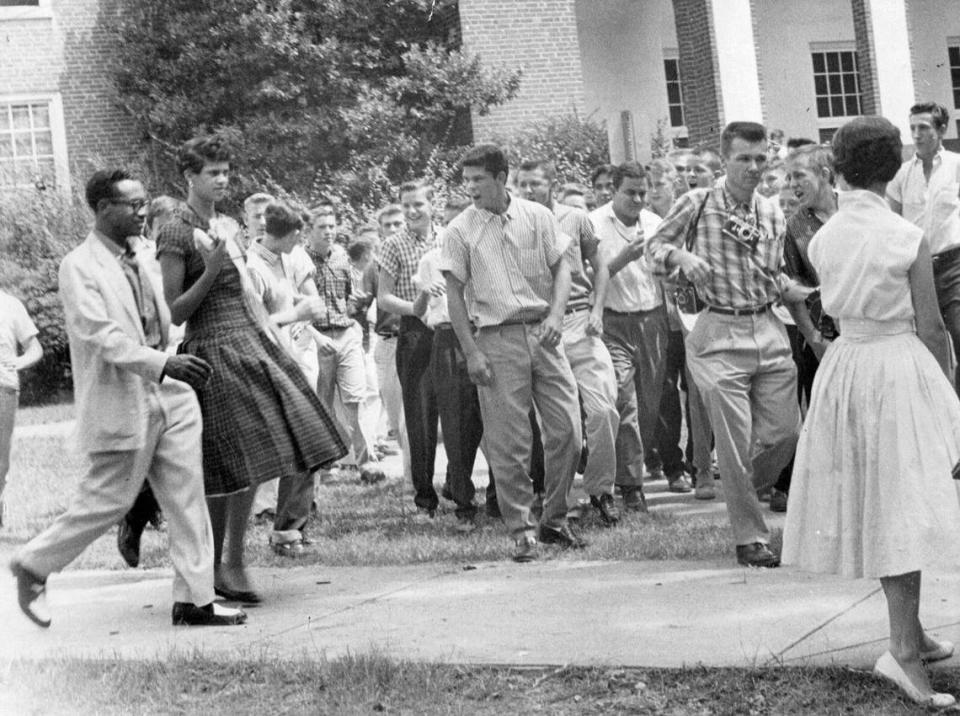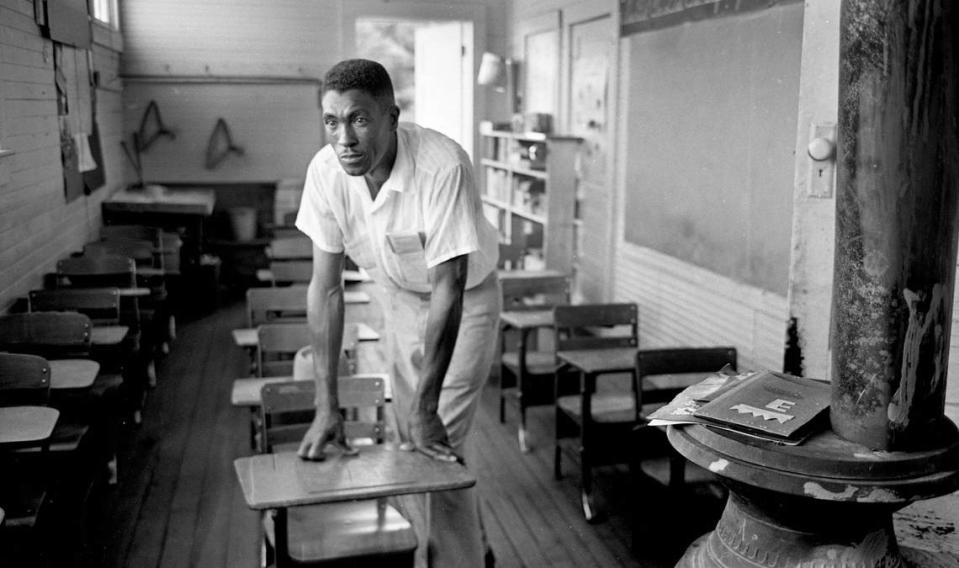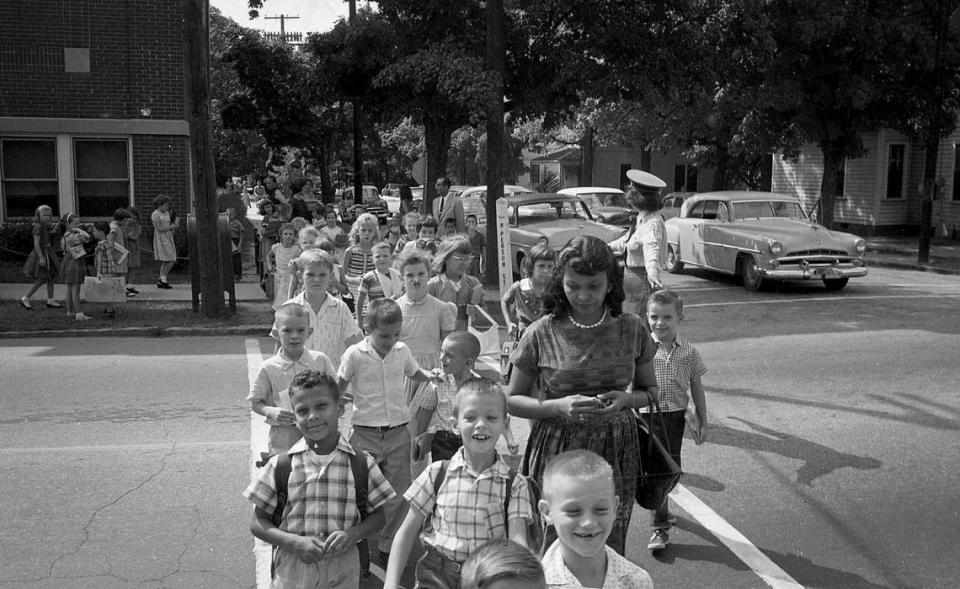NC’s public schools are now more racially segregated than they were in the 1980s
The nation is marking the anniversary of when racially segregated schools were declared illegal at the same time a new report shows North Carolina’s schools are resegregating.
Friday marked 70 years since the U..S. Supreme Court’s historic Brown vs. Board of Education decision that triggered decades of efforts to integrate schools. But N.C. State researchers say the data shows North Carolina’s public schools are more racially segregated now than they were in the late 1980s.
“We made a lot of progress on desegregation in North Carolina, but since the peak in the late 1980s we’ve seen schools become more segregated,” Jenn Ayscue, one of the report’s authors and assistant professor of educational leadership, policy and human development at N.C. State, said in an interview..
“That’s really discouraging because we have a much more diverse multiracial student body now. We have the potential for really wonderful integrated schools, but unfortunately our state is trending in the wrong direction.”
The “Can Our Schools Capture The Educational Gains of Diversity” study was done in conjunction with the UCLA Civil Rights Project to coincide with the anniversary of the Brown decision.

NC ‘backsliding’ on school integration
The late 1980s saw North Carolina school districts actively integrating schools. Districts such as Charlotte-Mecklenburg were still under federal court desegregation orders. Wake County was still making race-based assignments an active part of its policy.
But 35 years later, the report found that patterns of segregation have increased even though North Carolina’s school enrollment is now more diverse.
▪ More than two-thirds of the state’s white public school students attend a school with a majority white population even though white students only make up 45% of the overall enrollment.
▪ The number of intensely segregated schools of color, defined as at least 90% of the enrollment being students of color, rose to 13.9% in 2021.
▪ One in four Black students and nearly one in five Hispanic students are attending an intensely segregated school of color.
“This backsliding couldn’t be coming at a worse time,” the left-learning N.C. Justice Center said in a news release on the 70th anniversary of the Brown decision. “In our increasingly multiracial society, we all must be able to communicate and work collaboratively with people from different racial and ethnic backgrounds.
“Integrated schools provide students from different racial and ethnic backgrounds the opportunity for meaningful interactions that foster cross-cultural understanding, reducing bias and prejudice.”

Impact of ‘unregulated’ school choice
Ayscue says there are multiple reasons for why North Carolina’s are less integrated now. She pointed to how fewer schools are under federal court desegregation orders now and to racial segregation in residential housing patterns.
Another factor in North Carolina, Ayscue said, is the rise of “unregulated” school choice.
The number of charter schools has doubled since the statewide cap was lifted in 2011. Enrollment in private schools has risen since the state began providing taxpayer funded vouchers.
“The issue of desegregation is complex because the educational landscape is so complex,” Ayscue said. “It’s important to examine the ways that charter schools and private schools are more segregated themselves and are contributing to and exacerbating the problem of segregation in public schools.”
Private school enrollment could go even higher after the Opportunity Scholarship saw record demand this year when the state lifted income limits for getting a private school voucher. State Republican lawmakers are looking at how to increase funding to clear a waiting list of more than 55,000 applicants.

The N.C. Justice Center says lawmakers should be “putting an end to segregationist school choice schemes.”
“Vouchers have their roots in the shameful efforts by state leaders to avoid school integration,” according to the N.C. Justice Center. “Today, North Carolina lawmakers are using a voucher program that results in segregated schools. Similarly, North Carolina’s charter schools are often serving as schools of white flight.”
Several school choice advocacy groups contacted by The News & Observer declined to comment for this story.
Is there ‘political will’ to integrate schools?
It’s important to promote integrated schools, Ayscue said, because of the benefits for students shown from decades of social science research. This includes higher achievement levels, lower dropout rates, higher economic status and better jobs, reduction in prejudicial views and lower likelihood of being incarcerated.
The study points to “encouraging” school desegregation and integration efforts going on in places such as Durham and Wake County. Durham will reassign around 2,000 students to different elementary schools this fall as part of its “Growing Together” plan to make assignments more equitable.
Wake County’s award-winning magnet school program has used federal grants to further desegregation efforts.
The study offers several recommendations to help diversify North Carolina’s public schools, including:
▪ School districts should design voluntary desegregation polices, which could include redrawing school attendance lines, developing magnet school programs and merging districts that are in the same county.
▪ State lawmakers should hold charter schools accountable for diverse student enrollment practices and require charters to offer transportation and free or reduced-price lunch to qualifying students.
▪ State lawmakers should include civil rights protections for all students in private schools that accept vouchers, as well as require the same levels of transparency and accountability for those private schools accepting public funds.
Ayscue says it’s a question of whether there’s the “political will to facilitate integrated schools and sustain that over time.”
“The data in our report could be very discouraging because it shows schools are becoming more segregated,” Ayscue said. “If we don’t do anything now to reverse that course, we’ll likely to continue in that fashion and will have more segregation.”

